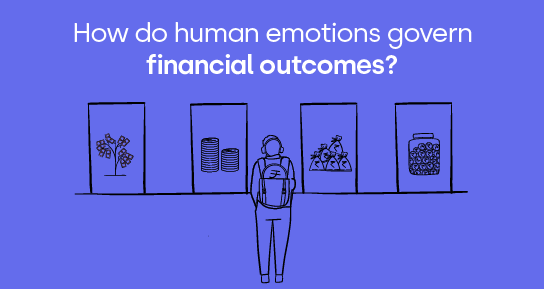Wise Up
Behavioral Finance: Are Your Emotions Driving Your Money Moves?
“Human behavior flows from three main sources: desire, emotion, and knowledge.” – Plato
For decades, psychologists have ardently argued against theories of finance and economics. They argued that human beings aren’t rational, and questioned the relevance of markets in the real world. To address this disparity, the field of behavioral economics was developed around the 1970s. Behavioral economics rallied that people repeatedly behave in an irrational manner. The application of behavioral economics in the world of finance came to be known as behavioral finance.
Which is what we’re delving into today.
So, what does behavioral finance tell us? Well, behavioral finance sheds light on how our financial decisions (investments, payments, debt, etc.) are all influenced by human emotion, human biases, and mental limitations as well. You can think of it as an unconventional way of thinking about your financial journey – by acknowledging that humans are not always (very rarely, in fact) acting rationally.

Concepts of Behavioral Finance
There are certain concepts of behavioral finance that are super intriguing and will surely help you understand this rather interesting finance theory a bit better! Here are some such concepts, along with their relevance to you – the investor!
- Prospect Theory (Or the Loss Aversion Bias) – Developed by Daniel Kahneman and Amos Tversky, prospect theory suggests that individuals evaluate potential gains and losses asymmetrically. According to this theory, what this means is that the pain of losing money is psychologically more significant than the pleasure of gaining the same amount. As a result, investors may be averse to entering a high-risk investment, even if it offers high rewards. Another aspect of this addresses the actions of an investor who is already invested – their fear of losing might cause them to end up holding on to investments for longer than they should, hoping for a turnaround, instead of cutting their losses.
- Herd Behavior – Herd behavior refers to the tendency of individuals to follow the crowd or imitate the actions of others. We’ve all been affected by herd behavior, especially when it comes to investing because following the herd potentially means making safer and more sound investment choices. But herd behavior in the stock market can lead to asset bubbles (sudden, unprecedented rise in the price of the stock) and market crashes. This happens because investors rush to buy or sell based on the actions of others rather than their own research.
- Anchoring – Anchoring is the process of relying too heavily on the first piece of information encountered when making decisions. For instance, you might buy a stock and then the price of the stock starts to fall. It continues to fall, but you refuse to sell it, in the hopes that you will at the very least be able to retrieve your initial investment in the stock. As a result, you are anchoring yourself deeper and deeper into loss.
These 3 concepts are all about the emotions that drive us. But there is something else that can inform our decision-making. Bias! Here is how a personal bias might manifest in your investment habits –
- Overconfidence Bias – Overconfidence bias occurs when investors overestimate their own knowledge and abilities. In investing, overconfident investors may trade excessively, and often impulsively, leading to higher transaction costs and poorer investment outcomes in the long run (if not in the short run too!). Young investors often fall prey to this bias, believing they have superior insights into the market, and more often than not, the market gets the better of them!
- Confirmation Bias – Confirmation bias is the tendency to seek out and interpret information in a way that confirms one’s existing beliefs or opinions. For example, you might think a particular stock is a sound investment, and there are 10 sources supporting that thought, and you choose to believe them over the 90 that are arguing said stock’s viability as a sound investment. Young investors may be susceptible to this bias, only looking for information that supports their investment thesis while ignoring contrary evidence.
Understanding behavioral finance (and questioning your own behavior with respect to money!) will give you a lot of insight into yourself as an investor. It is important to identify for yourself what makes you tick, and what makes you move along in your investment journey while ensuring that your financial goals are being met.
So, what do your investment patterns tell you about yourself?

